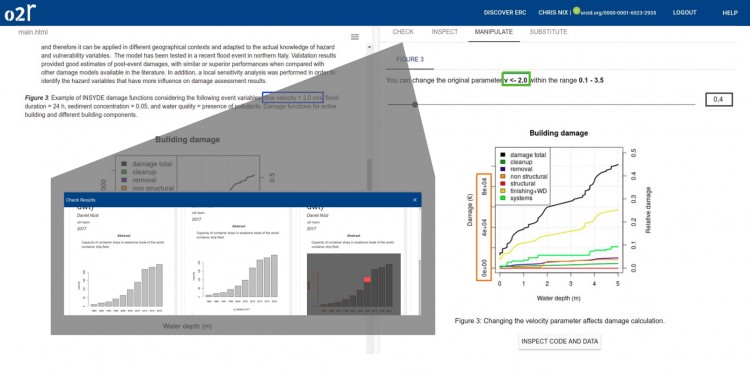
Making research results reproducible
Starting in April of this year, the German Research Foundation (DFG) is supporting a joint project of the Institute for Geoinformatics at the University of Münster and the local University Library. The aim of the project "Opening Reproducible Research" (o2r) is to make research results more reproducible and scientific work more transparent. This is achieved by combining all necessary elements of an article (text, data, analysis) into a single consistent package and by presenting scientific studies and their data interactively. The DFG funding amounts to 500000 Euro and the project will run for two and a half years.
Even in the online editions of scientific journals, scientific publications today are still presented in a similar way as in traditional print editions. “With our project we are aiming to bring scientific publications into the 21st century,” says Markus Konkol from the Institute for Geoinformatics. He and his colleagues are developing the o2r platform for this purpose. It is intended to enable all interested parties to not only read the article, but to also directly work with the research data and software underpinning the article. This will allow readers to engage much more deeply with the article and to come to their own conclusions. “We want to support scientists in setting up a 'digital laboratory' that can also be experienced by others, such as students, colleagues or reviewers,” emphasizes geoinformatician Daniel Nüst.
In the predecessor project he and his colleagues developed a prototype of the o2r platform, which will now be tested in cooperation with the publisher Copernicus Publications and a large commercial publishing house. Special issues of scientific journals are planned, in which classic articles will be supplemented by browser-based analyses that are interactive and transparent. The first special editions will be published in the course of the coming year. For the time being, the project is focusing on geoscientific literature, but may be extended to other disciplines in the future.
In addition, the geoinformaticians, together with their colleagues from the Münster University Library, are planning to connect o2r’s solution for reproducible articles to the open source software "Open Journal Systems" (OJS). This software is mainly used for Open Access journals – all content published there is free of charge and freely accessible, which contributes to greater availability and transparency of research results. The integration with OJS and all other software developed within o2r will be published as free and open source software as well. “The project's developments and results will provide building blocks and concepts for enhanced academic publications and thereby for the future infrastructure for scholarly communication,” emphasizes Daniel Nüst.
